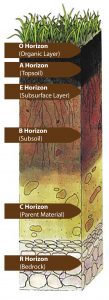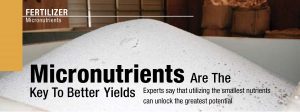 Rita Abi-Ghanem, PhD, Senior Director of Research and Development at Bio Huma Netics, Inc. (BHN), has been selected as Chair-Elect for 2016 and Chair for 2017 of the Women-in-Science Committee of the Alliance of Crop, Soil, and Environmental Science Societies (ACSESS). ACSESS member organizations include American Society of Agronomy (ASA), Crop Science Society of America (CSSA), and Soil Science Society of America (SSSA).
Rita Abi-Ghanem, PhD, Senior Director of Research and Development at Bio Huma Netics, Inc. (BHN), has been selected as Chair-Elect for 2016 and Chair for 2017 of the Women-in-Science Committee of the Alliance of Crop, Soil, and Environmental Science Societies (ACSESS). ACSESS member organizations include American Society of Agronomy (ASA), Crop Science Society of America (CSSA), and Soil Science Society of America (SSSA).
Dr. Abi-Ghanem—who is also an adjunct faculty member of the Department of Crop and Soil Sciences at Washington State University (WSU) and serves as a member of the Humic Products Trade Association Science Committee, the Fluid Fertilizer Foundation Research and Education Committee, and the Arizona Department of Agriculture Pesticide Advisory Committee—states that she is deeply honored to be selected for this position, and she looks forward to working with scientists from around the globe to bring more women into the sciences and help them achieve success. “Women face unique challenges in the sciences, and the work this committee does to ensure that women scientists can fully contribute to the missions of our three societies is very important to the success of the societies.”
The ACSESS Women-in-Science Committee has the following goals:
- Promoting the status of women in the three societies
- Encouraging women to achieve professional excellence
- Establishing networks of women in the agronomic, crops, soils, and environmental sciences
- Sponsoring meetings to address issues of special concerns to professional women in our sciences
- Fostering the informal exchange of information and contacts in support of professional activities of women
BHN CEO Lyndon Smith stated that he is very pleased with this recognition of Dr. Abi-Ghanem’s contributions to science and of her standing in the international science community. “Dr. Abi-Ghanem is a remarkable scientist, and she will do an outstanding job as role model and catalyst for increasing opportunities for women to successfully contribute to the soil and agronomic sciences.”
# # #
About Bio Huma Netics Inc.
Founded in Mesa, Arizona, in 1973, Bio Huma Netics, Inc., (BHN) is a global leader in providing sustainable solutions to the world’s environmental challenges for agriculture (HUMA GRO®); horticulture, turf & ornamentals (HUMA GRO® TURF); and water & wastewater (PROBIOTIC SOLUTIONS®) through its constantly improving Micro Carbon Technology®. Learn more at www.bhn.us.
Publication No. BHN-160216-01


